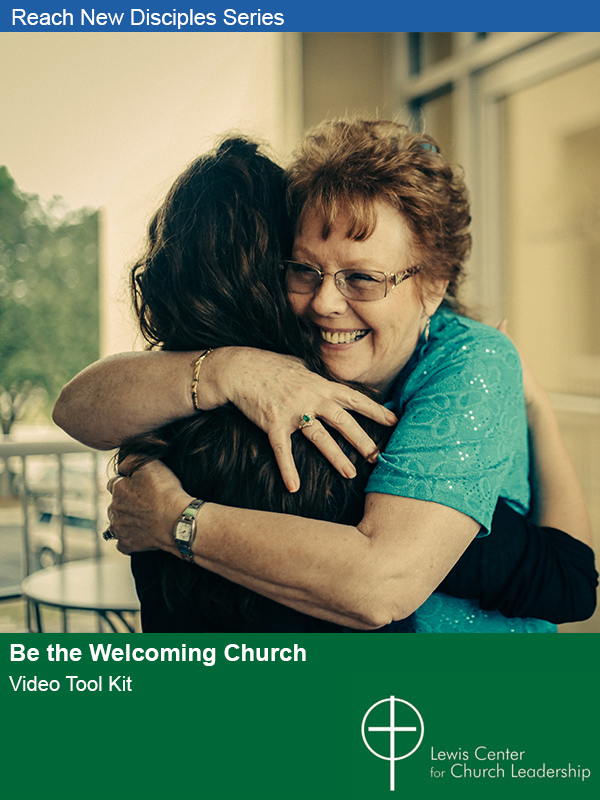Priscilla Pope-Levison’s book, Models of Evangelism, studies eight influential approaches to evangelism, everything from visitation and revivalism to social media. She finds that regardless of the method deployed, five qualities are essential to effective evangelism — hospitality, relationships, integrity, sharing the Christian message, and rootedness in the church.
To celebrate the Lewis Center’s anniversary, we are highlighting Leading Articles — some of our most popular posts of the past 20 years. We are pleased to share again this article by Priscilla Pope-Levison, originally published on September 7, 2021.
What makes evangelism good? When we consider the dramatically different models of evangelism deployed by the church — church growth versus prophetic evangelism, revival versus small group evangelism — five key qualities of good evangelism recur: hospitality, relationship, integrity, message bearing, and church rootedness. No matter which approach to evangelism you prefer, these five qualities are the essential ingredients that gauge the effectiveness of your effort.
1. Hospitality
Hospitality is the first essential quality of good evangelism. “At first the word hospitality might evoke the image of soft sweet kindness, tea parties, bland conversation, and a general atmosphere of coziness,” commented Henri Nouwen. Nouwen preferred instead to live into the ancient meaning of hospitality as the offer of a space where “change can take place,” a space “where the stranger can enter and become a friend instead of any enemy.” Nouwen was right. Hospitality is anything but sappy and shallow. Hospitality is deep and deliberate. It is strategic. It is well planned and, just as essential, implemented by the hosts whose eyes are trained on strangers, whose postures are outward facing, whose relationships lie in the future and not just the past.
2. Relationship
According to a recent study, a relationship with a Christian is the number one reason why people gravitate toward Christianity; evangelism is practiced most effectively through a personal relationship. The study found that nearly three-quarters of respondents identified a spouse or partner, a congregation, a minister, a family member, or a friend as the central influence on their decision. If children are counted as an influence, then the number increases to 86%; nearly nine out of ten people, young and old, trace their faith to another person they know. Evangelism is not mechanical; evangelism is relational. If hospitality is the first essential quality of good evangelism, relationship is the next. These two qualities, of course, are joined at the hip. It is challenging to be hospitable while eschewing the possibility of personal relationships, and it is certainly difficult to be in relationship absent a willingness to extend authentic hospitality.
3. Integrity
In 1927, famed social critic and author Sinclair Lewis trained his sights on American evangelism. Lewis’s novel Elmer Gantry exposed the hypocrisy and immorality of a barely fictional evangelist. Since then, evangelists, both women and men, have abetted this caricature. In the 1980s, for instance, Jimmy Swaggart, having succumbed to sexual exploits, wept on television. Jim and Tammy Bakker fell as well, forfeiting their vast financial empire. If evangelists can be caricatured as self-absorbed, greedy, and untrustworthy, it is not solely the product of Sinclair Lewis’s pen; for decades, real-life figures have acted in kind.
Such a troubling legacy demands that good evangelism be done with extraordinary integrity and impeccable consistency. Some renowned Christian leaders stand as exemplars of integrity, like Oscar Romero, Mother Teresa, and Billy Graham. While they occupied dramatically different vocations, they strove tirelessly to match their words and their deeds. When Christians sync their words and deeds to the good news of the gospel, they chip away, bit by bit, at the negative attitudes and opinions held by non-Christians. In other words, if Christians want non-Christians to dialogue with them, they must be the sort of people to whom others are drawn by seeing integrity in every facet of their lives. Integrity is the baseline for good evangelism.
4. Message bearing
Over the years, as I have taught courses on evangelism, many students have invariably tripped over this next quality of evangelism. Hospitality? Yes. Relationships? Of course. Integrity? Absolutely. But message bearing? Probably not. There is the inevitable reference to Saint Francis’ phrase, “Preach the gospel at all times. When necessary, use words,” even though evidence that Saint Francis actually said this is contested. Perhaps Christians should modify their memory of the aphorism attributed to Saint Francis. Perhaps it should read, “Preach the gospel and, since they are indispensable, use words.”
Christians inevitably are message bearers, and that message is full of beauty, peace, goodness, and salvation. Good news, expressed verbally in the context of good evangelism, is deeply rooted in the Jewish and Christian traditions. It is essential to remember that a sermon or speech is not the sole or singular medium of the message. This is obvious in personal, visitation, and media evangelism, but it is part and parcel of other models as well. If the preacher and celebrant in liturgical evangelism are message bearers, so are the laity who sing and declare the words of the liturgy, who teach and mentor catechumens, and who reaffirm their faith in the celebration rites of baptism and communion. The more and more diverse the message bearers there are, the richer and wider the impact of the Christian message.
5. Church rootedness
This quality may seem detrimental to the evangelistic impulse, given an overwhelmingly negative perception of the church among the unchurched. In a survey of unchurched Americans, the vast majority of respondents identified their sticking point as the church itself — not Jesus. On the other hand, those who did come to faith in Jesus Christ, according to another recent study, named the church as the key inspiration. The reality is that the church is an evangelist, whether members and clergy are aware of it or not. Especially in a world of untrammeled media accessibility, the public watches what the church does and listens to what it says or does not say.
Evangelism, then, is not the besetting problem of the church. The church is the besetting problem of the church. But the church is also a point of promise, a touchstone for the unchurched. And the church can become a compass for a disoriented world if it embraces the qualities that exemplify good evangelism — hospitality, relationships, integrity, a message of the good news of the gospel, and church rootedness. This sort of community embodies the good news; it is the good news. With the relentless pursuit of these five qualities, the church can be a distinctive community of disciples centered on Jesus that the world notices, perhaps even admires, and wants to “come and see.” (John 1:46).
 This material is adapted from Models of Evangelism by Priscilla Pope-Levison ©2020, Baker Academic, www.bakerpublishinggroup.com. Used by permission. The book is available at Baker Publishing Group, Cokesbury, and Amazon.
This material is adapted from Models of Evangelism by Priscilla Pope-Levison ©2020, Baker Academic, www.bakerpublishinggroup.com. Used by permission. The book is available at Baker Publishing Group, Cokesbury, and Amazon.
Related Resources
- Be The Welcoming Church, a Lewis Center video tool kit resource
- Relationships are the Key Ingredient in Successful Outreach by Doug Powe
- 4 Characteristics of Biblical Evangelism by Doug Powe
- Transforming Evangelism: The Wesleyan Way of Sharing Faith (Abingdon Press, 2006) by Doug Powe and Henry H. Knight III
If you would like to share this article in your newsletter or other publication, please review our reprint guidelines.
Some icons in the cover image are by freepik.com.







